
Invertebrates Around Las Vegas, Wildlife Around Las Vegas
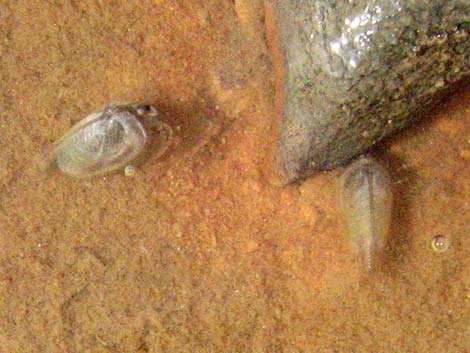 |
General: Clam Shrimp (Order Conchostraca) are tiny crustaceans that live in temporary pools (vernal pools, tinajas) in the southwestern United States. They have a two-part carapace that looks like a clam shell, hence the name. The black eyes are set close together, forming a black dot atop the head. Adults grow to about 15-mm long. Males have large claws that they use for grasping females. Clam Shrimp are omnivores. They feed on algae, zooplankton (microscopic animals), and detritus. Taxonomy: Order Conchostraca; several families. |
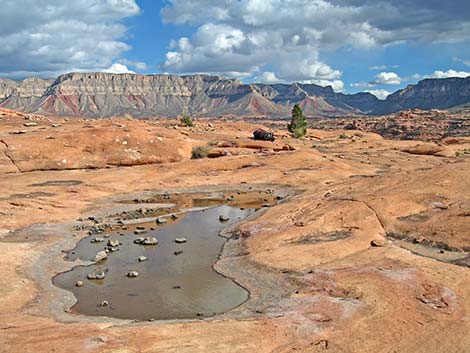 Tinaja full of fairy and clam shrimp; Grand Canyon |
Clam Shrimp hatch, mature, and mate before their vernal pool dries up. Females lay eggs (actually cysts) that can survive for several years in the sand or dried mud during hot summers. The cysts hatch when the pool refills with water, and the cycle of life repeats. Clam shrimp share their habitat with fairy shrimp, tadpole shrimp, midge larvae, and other tiny creatures. Please be careful around tinajas and vernal pools so as not to damage the habitat or injure the creatures that live in them. Don't wash in tinajas because soap will hurt the wildlife. |
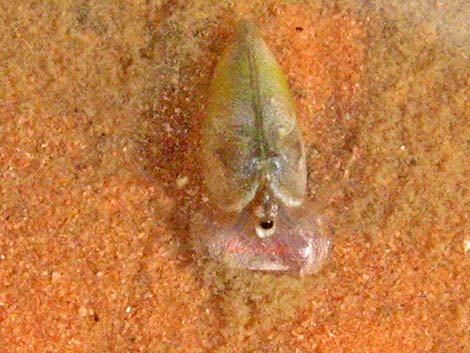 Male, dorsal view; note large claws used to hold female during mating |
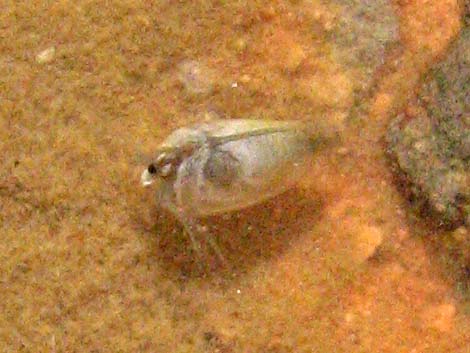 Female, dorsolateral view; note the lack of large claws |
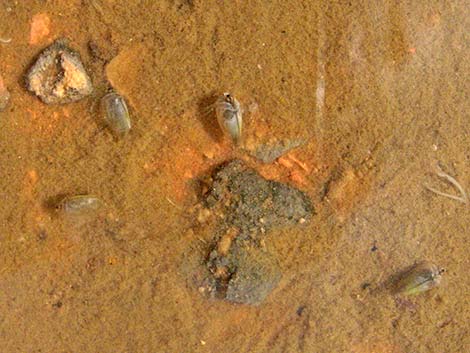 Several clam shrimp in shallow water |
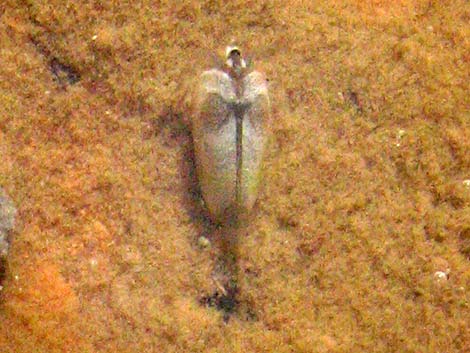 Female, dorsolateral view; note the lack of large claws |
| Inverts Around Las Vegas | Wildlife Around Las Vegas | Glossary | Copyright, Conditions, Disclaimer | Home |